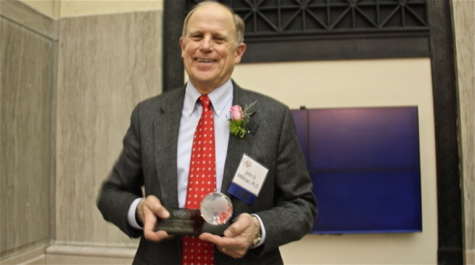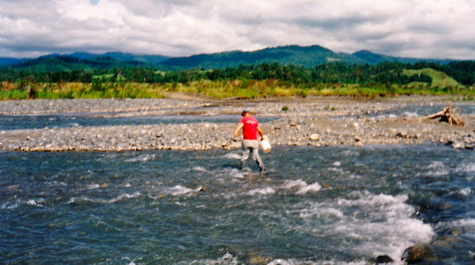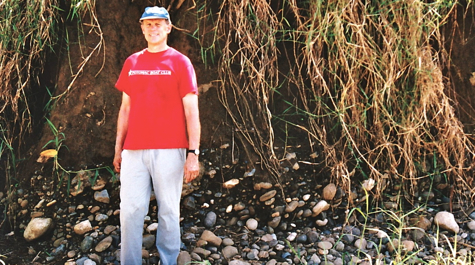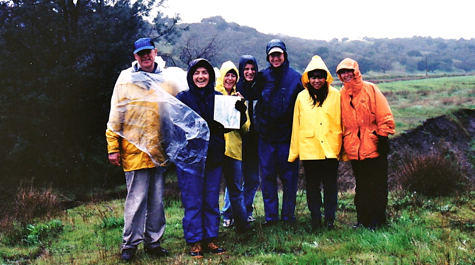VIMS professor honored as Outstanding Scientist
Governor Bob McDonnell and the Science Museum of Virginia have named Chancellor Professor John Milliman of the Virginia Institute of Marine Science, College of William and Mary, as one of Virginia’s Outstanding Scientists for 2012.
The Outstanding Scientist award is bestowed annually to honor those who have excelled in research and commitment to science, and whose contributions to scientific research have extended the boundaries of their own and other fields. Award recipients are selected by a distinguished panel of internationally renowned Virginia scientists.
“This award is richly deserved recognition for John Milliman, and it’s splendid not just for him but for VIMS and William & Mary as a whole,” says W&M President Taylor Reveley. “John is an internationally renowned marine geologist as well as a master teacher and mentor to his students. By every measure, Dr. Milliman has walked the walk of an outstanding scientist, professor, and colleague. He is one of the best.”
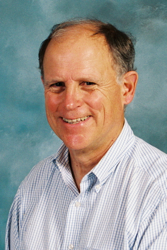 Milliman, whose career at William & Mary’s School of
Marine Science at VIMS began in 1993, has conducted groundbreaking research and
published seminal works in not just one but two key areas of marine
science—river discharge and carbonate chemistry. He is also a pioneer in
establishing collaborative research ties between the U.S. and China.
Milliman, whose career at William & Mary’s School of
Marine Science at VIMS began in 1993, has conducted groundbreaking research and
published seminal works in not just one but two key areas of marine
science—river discharge and carbonate chemistry. He is also a pioneer in
establishing collaborative research ties between the U.S. and China.
Dr. Roger Mann, Director of Research and Advisory Services at VIMS, says “The hallmark of outstanding scientists is the vision they have for both expanding boundaries of scientific knowledge and driving positive societal change. John is a visionary par excellence and a globally recognized leader in marine geology.”
River Research
During the past two decades, Milliman’s research has focused on studies of how river discharge influences the ocean, and how human actions impact river discharge. This work has culminated in the world’s largest river database—with records from 1,534 rivers around the globe—and publication in 2011 of River Discharge to the Coastal Ocean: A Global Synthesis. Co-authored by Dr. Katie Farnsworth, a Ph.D. student with Milliman from 1998-2003 and now an Associate Professor at the Indiana University of Pennsylvania, the book presents a detailed analysis and synthesis of the processes affecting river discharge of water, sediment, and dissolved solids.
VIMS Dean and Director John Wells says “John and Katie’s book is a critically important resource at a time when societies around the globe are attempting to manage and plan for the threats of coastal erosion, low-oxygen dead zones, and sea-level rise.”
The book reveals how human activities such as dam building, levee construction, and agriculture have drastically altered the nature of river input to the ocean, both decreasing the amount of sediments deposited in deltas and available to protect shorelines, and increasing the inputs of nitrogen and other nutrients that fuel low-oxygen coastal dead zones.
Dr. Bilal Haq, a former colleague of Milliman at the Woods Hole Oceanographic Institution and currently the Director of the Marine Geosciences Programs at the U.S. National Science Foundation, says the book “promises to be an authoritative and influential reference for educators and policymakers for years to come.” Professor James Syvitski of the University of Colorado agrees that it’s a book for the ages. “Through perseverance,” he says, “professor Milliman and students have put together the largest global database on river discharge and sediment transport ever. This work will be honored for centuries.”
Haq and others laud Milliman’s earlier contributions to river science as well. Haq notes that Milliman’s 1992 paper on the global importance of small mountain rivers led to a “paradigm shift in the field,” revealing that these steep torrents transport more sediment to ocean basins than all major rivers combined—including the Amazon, Mississippi, Congo, and Yangtze. A recent analysis of that 1992 paper showed it to be the fourth most-cited research study among more than 17,000 coastal science articles published between 1975 and 2005.
VIMS professor Steve Kuehl says “Simply put, John is the world’s expert on rivers. His 1992 paper and other contributions literally changed the course of major science funding in the coastal ocean for the next two decades.”
Carbonate Research
Milliman’s research career began with a focus on ocean carbonates. These compounds play a key role in buffering ocean acidity, and serve as the skeletal building blocks of a wide variety of marine organisms, from oysters to corals to single-celled marine phytoplankton. Milliman’s 1974 book Marine Carbonates remains the definitive text for geologists and biologists of all stripes.
Dr. Jonathan Warrick of the U.S. Geological Survey says Milliman’s work on marine carbonates “established the ocean-wide budget of these important compounds” and “has defined how the ocean will respond to acidification under the elevated carbon dioxide concentrations of the coming centuries.” Rising ocean acidity has already been implicated in causing harm to shellfish beds and coral reefs due to dissolution of the organisms’ skeletons and shells.
To date, Milliman has published more than 200 peer-reviewed research papers during his 46-year career, many of them highly cited by subsequent researchers. Syvitski, using a metric he developed as director of the Institute of Arctic and Alpine Research, says “John has written 8 platinum papers [with more than 50 citations] and another 24 gold papers [with more than 100 citations]. If his success were in the field of music, he would surely be entered in the Rock & Roll Hall of Fame beside the Beatles and the Rolling Stones.”
Education
In addition to his research accomplishments, Milliman has also played an important role in the education program at VIMS, serving as the Dean of Graduate Studies from 1993-1999, and as the major advisor for 10 graduate students and as a committee member for 18 others.
Professor Carl Friedrichs, chair of the Physical Sciences Department at VIMS, says “a hallmark of John’s service as Graduate Dean was his commitment to recruit students from under-represented groups.” Milliman was instrumental in strengthening VIMS’ Research Experience for Undergraduates program, now in its 22nd year. A 2010 survey of VIMS REU alumni shows that 66% of those from minority groups have gone on to pursue careers or higher degrees in science or engineering.
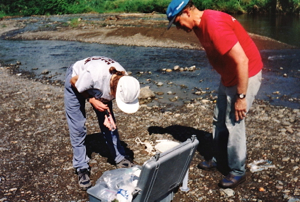 Milliman teaches a number of graduate and undergraduate
courses, including “Marine Geology,” “Tropical Carbonates,” and “Rivers:
Processes and Management.“ The latter includes a popular weeklong Spring Break
field trip to study the rivers of California.
Milliman teaches a number of graduate and undergraduate
courses, including “Marine Geology,” “Tropical Carbonates,” and “Rivers:
Processes and Management.“ The latter includes a popular weeklong Spring Break
field trip to study the rivers of California.
Testimonials from former students speak to the enthusiasm and joy that Milliman brings to his work. Dr. J. Paul Liu, (VIMS Ph.D. 2001) says “The most important thing John taught me wasn’t only the knowledge of marine geology, but the attitude to do research, particularly the way to see the big picture. His enjoyment of doing research in both the lab and field really attracted me and led me to the academic field.”
Farnsworth says “The most important education John provided was to allow me to share in his passion for his work. You can’t miss it standing in the pouring rain on a shaking bridge with the flooded Ventura River rushing beneath you. If you had been lucky enough to be there with us, you would have seen the smile on his face and the excitement in his eyes.”
Top 5 Cited Articles
[source: Google Scholar]
- J.D. Milliman and R.H. Meade, 1983. World-wide delivery of river sediment to the oceans Journal of Geology.—1785 citations
- J.D. Milliman and J.P.M. Syvitski, 1992. Geomorphic/tectonic control of sediment discharge to the ocean: the importance of small mountainous rivers. Journal of Geology.—1376 citations
- J.D. Milliman, 1974. Marine Carbonates. Springer-Verlag, 375 p.—1078 citations
- J.D. Milliman and K.O. Emery, 1968. Sea levels during the past 35,000 years. Science.—550 citations
- J.D. Milliman, 1993. Production and accumulation of calcium carbonate in the ocean: budget of a non-steady state. Global Biogeochemical Cycles.—334 citations.
Edited Volumes (selected)
- Milliman, J. D., & Haq, B. U. (1996). Sea-level rise and coastal subsidence: Causes, consequences, and strategies. Dordrecht ; Boston: Kluwer Academic Publishers.
- Jeftic, L., Milliman, J. D., Sestini, G. and United Nations Environment Programme. (1992). Climatic change and the Mediterranean: Environmental and societal impacts of climate change and sea-level rise in the Mediterranean region. London ; New York: E. Arnold.
- Milliman, J. D., & Wright, W. R. (1987). The Marine environment of the U.S. Atlantic continental slope and rise. Boston: Jones and Bartlett Publishers.
A list of professor Milliman's books, reports, and VIMS contributions is available from the Hargis Library at VIMS.


